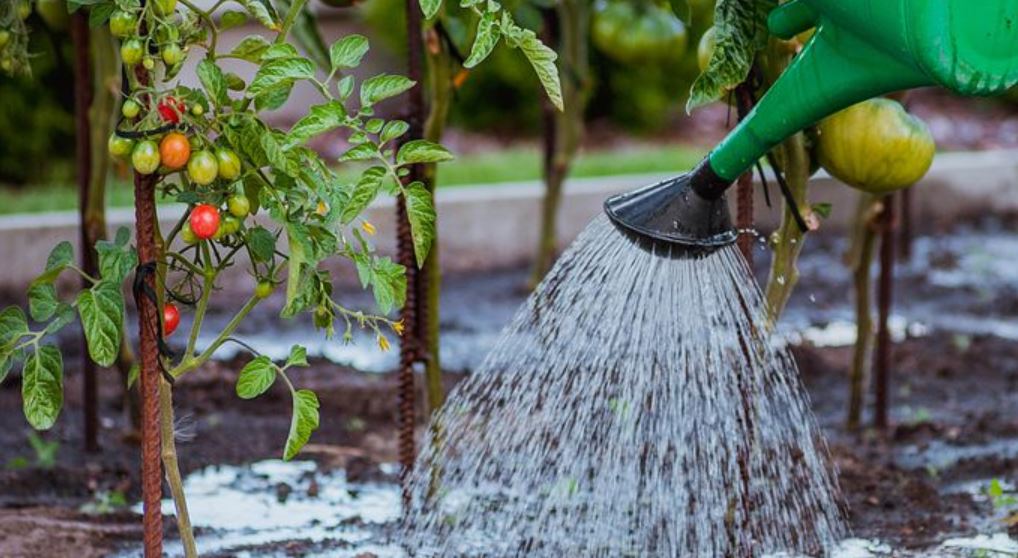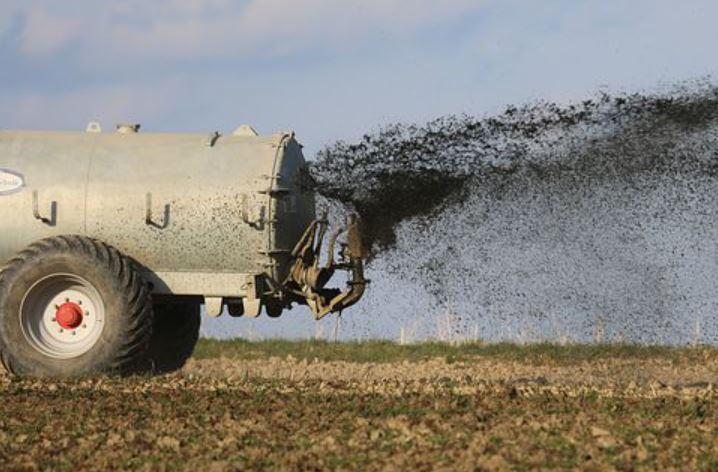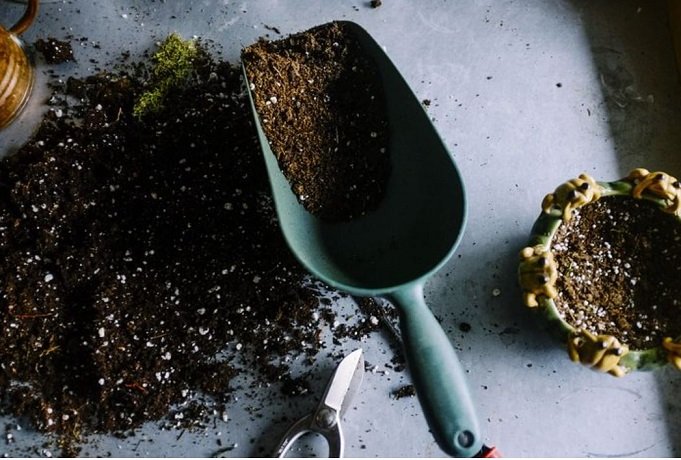Garlic is an essential vegetable for everyone who takes an interest in growing vegetables at home. But many gardeners in the USA have questions about the soil requirements of garlic and suitable types of soil for garlic growing.
Garlic requires moist soil that drains well and a steady supply of nutrients.
Choosing the right soil solutions is a must for nourishing the plants. Anything sub-optimum is unacceptable and will result in low growth and a fruitless harvest!
Garlic loves high amounts of time in full sunlight, making location another important factor when deciding where to plant your garlic crop.
To start assessing your soil quality, you will have to find out what type of soil you have. Even if it is not perfect, you can grow garlic by adding compost and watering.
Why Garlic Turns Green or Blue? Is It Safe or Risky to eat? (Solved & Explained)
Best Types of Soil for Garlic Growth
Your garlic will thank you for providing it with the best soil possible. This soil is after all its growth medium.
A soil that drains well is the most appropriate for garlic since it requires constant moisture.
Providing too much water can lead to water-logging which has adverse effects on the garlic. “Wet feet” can lead to rotting if your garlic sits in it for too long, this is why garlic needs soil that drains well and does not collect stagnant water.
Loam Soil
There is a reason why most gardeners prescribe loam soil when growing any vegetable. Loam is ideally the perfect soil! The reason is that it retains enough water to stay moist without becoming unbearably “wet”.
Loam is a unique soil for planting as it contains equal amounts of silt and sand with a lesser amount of clay. To be specific, the ratios sit at 40% silt and sand, while clay only occupies 20% of the total composition.
Potting Mixes
Potting Mixes are pre-mixed compositions you can utilize to grow or enrich a range of vegetables. These potting mixes are a home gardener’s best friend since they are available to cater to plant-specific needs.
Most potting mixes are peat moss (with limestone)-based or coconut coir–based. Apart from this, their composition also contains sand, perlite, vermiculite, and compost. Each component has a role in providing a certain benefit to the plant.
Perlite is helpful in making sure all water drains out easily. Sand also has the same effect, bearing minimal water retention capabilities. This is why sand is the best growing medium for cactus and other plants requiring limited water.
Vermiculite on the other hand helps to retain water to ensure the garlic has enough moisture to grow comfortably.
Sandy Soil
Sandy soil alone would drain too much and lack vital nutrients. But having a steady irrigation system and applying constant fertilizer can yield healthy garlic of a good size.
Sandy soil and a mixture of loam create Sandy Loam, a medium favorable for garlic growth.
Loam helps provide garlic with all the nutrients it needs.
Adding organic matter can help garlic growth to ascend to ideal values. Beware! Adding excess amounts of organic materials can lead to swamping and poor drainage.
Clay Soils
Clay soils are not the most ideal soils for growing water-sensitive crops like garlic since they tend to collect water and form flooded fields. However, adding organic matter such as manure and compost can make conditions better.
You can utilize well-draining clay soil to grow large bulbs of garlic. As long as water-logging is prevented and nutritional materials are provided throughout growth. To avoid becoming water-logging, planting garlic on raised platforms can also help.
Soil Requirements of Garlic
Right Soil may sound like a simple requirement but it can get quite complex.
Luckily garlic is not the hardest plant to grow. Providing the basics as mentioned below will get you over the line!
Moisture/Water

Lack of moisture will result in your garlic cloves shriveling before they even sprout! You will have to be diligent and ensure that the soil is always moist but not wet. Watering is a constant activity that applies to growing garlic and any other vegetable.
Manure/Fertilizer
The purpose of manure is to provide nutrients to plants in a gradual manner to ensure the plant’s nutrient requirements are satisfied throughout its growth period. Manure comes in various forms and serves as the major nitrogen source for garlic plants.
A variety of manure options are available in the market or can be sourced from livestock farms. The main garlic manure types include:
1. Cow Manure
Cow manure is relatively accessible on the market regardless of location. You will need to apply this manure prior to planting your garlic cloves 3 weeks in advance is usually adequate to allow complete inclusion of nitrogen to the soil.
Cow manure does tend to evaporate fast and you will need to turn it over to keep the nutrients from escaping.
2. Blood Meal

Blood meal has slaughterhouse by-products making it a rich source of organic nitrogen. Nitrogen accounts for 12% of the total weight of blood meal fertilizer.
3. Pelleted Chicken Manure
Any manure consisting of chicken waste products is rich in nitrogen. The advantage of chicken manure over cow manure is that chicken manure is less volatile. This means you will not have to flip the manure to preserve nutrients.
Note, that the chicken manure must be added to the soil before planting because of its heavy nutrient composition which could lead to plant shock.
Nutrients
Garlic has minimal nutrient requirements, namely: Nitrogen, Potassium, Phosphorus, and Sulphur. These same nutrients have various effects on the garlic plant throughout its growth.
1. Nitrogen
Nitrogen is important for initial garlic growth and is easily found in almost any type of composting material. Using compost is ideal since it releases nitrogen at regular intervals as the material degrades over time.
2. Potassium
Another vital nutrient is potassium which plays a leading role in assuring leaves develop properly. Potassium initiates healthy bulb development and helps to prevent the formation of deformative garlic bulbs.
3. Phosphorus
Phosphorus is a crucial element that promotes the growth of garlic roots, helping the plant to absorb water and minerals in the soil.
4. Sulphur
Perhaps the most important of them all, sulfur directly contributes to the positive health effects that garlic is so famous for.
pH Levels
Garlic thrives in soil that has a pH of 6 to 7.5, this gives a neutral to acidic nature to the soil. Prior to planting garlic, conduct a simple pH test on your soil. If your soil is out of this range, you can correct it by liming, a process of adding lime to the soil.
Aeration
Air contains two important components: Carbon Dioxide and Oxygen. The above-ground parts are green photosynthetic and use carbon dioxide. The roots and stem that reside below-ground, utilize oxygen just like us humans.
Air is a basic requirement for all growing vegetables as it facilitates vital chemical processes within the soil. The soil must be aerated to offer enough air. Compact soil contains no air spaces and can suffocate the roots.
Mulching

The addition of mulch is called mulching and is done just after planting. It helps in these ways:
- Protecting garlic sprouts from extreme frost when the ground freezes
- Helps to keep the soil moist by limiting evaporation and retaining water
- Suppresses the growth of weeds by reducing exposure to sunlight
- Keeps temperatures optimal for plant growth
- Possible nutritional benefits
When it comes to growing garlic, a thick layer of mulch should be immediately placed over the planted garlic cloves to setback weeds. You will need to constantly replenish mulch as it degrades away and thins out. Avoid mulching 120 days before you are ready to harvest your garlic.
What is the Best Mulch to Prevent Weeds?
The best mulch to prevent weeds usually consists of ones that are easiest to the source. Wood chips, straw, leaves, and grass cuttings, make the best and most effective types of mulch. You can easily store fallen autumn leaves for use as mulch.
How to Grow Garlic Indoors? Growing Garlic Bulbs and Scapes in Pots
Pest Control
Pests are a problem for all gardeners. Although a large number of pests do not affect garlic there are some that also attack members of the “Allium” family. They fix themselves and remain in the soil if you grow consecutive crops of the same family, e onions, garlic, scallions, etc.
One way to make sure soil pests do not affect your garlic is to practice crop rotation and to indulge in companion plants for garlic. Both methods greatly decrease the effects of pests and diseases that garlic is prone to.
Let us remind you that some pests are beneficial as well. Earthworms help to degrade organic compost materials which help nutrients leach out into the soil. They also may help to aerate the soil by increasing spaces between soil grains.
FAQs
Perlite is a naturally occurring compound that almost looks like popcorn. This white-colored lightweight substance is used in gardening. This is because Perlite aids in soil aeration and water retention, the two most common problems vegetable planters face.
Perlite is more common in soils where the plant does not thrive in wet or even moist conditions. Examples are cactus and other succulents that do not even need soil but a potting mix.
Vermiculite is a simple name for hydrated laminar magnesium-aluminum-iron silicate. Basically, they are refined fragments of minerals that enhance soil quality in terms of their nutrients and structure. If you have soil that does not drain and lacks air, vermiculite can assist.
Clay is a compound that is known to cause poor water drainage when it is present in high quantities in any soil. Despite this, garlic can still thrive in clay soils with a few modern adaptations making it manageable. These include:
– Adding water draining substances such as Vermiculite
– Planting garlic cloves in raised mounds

